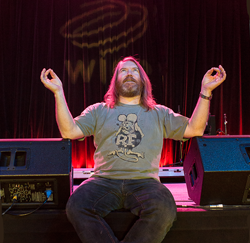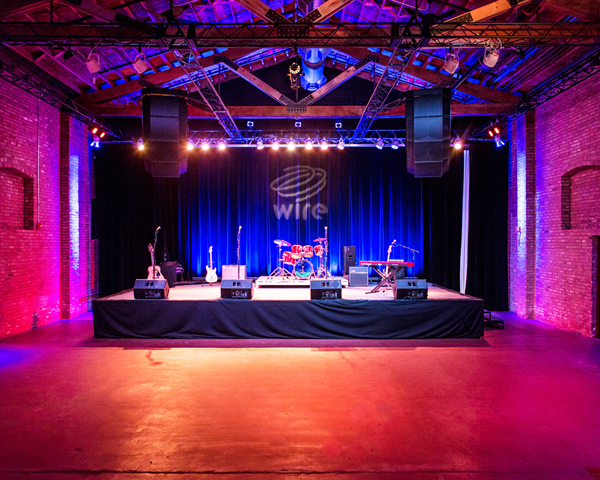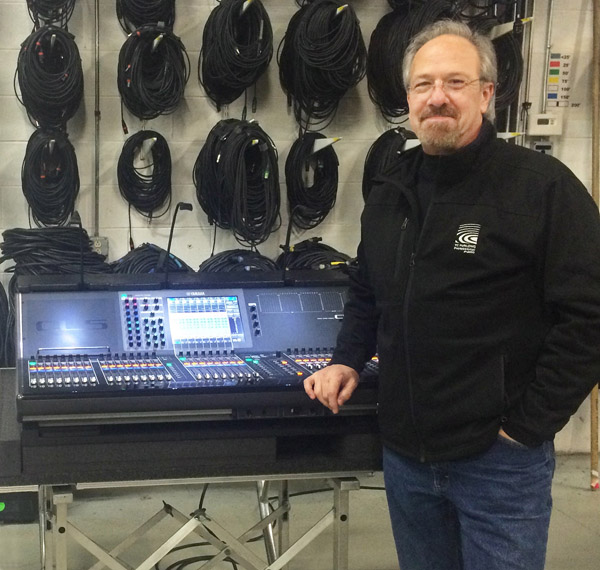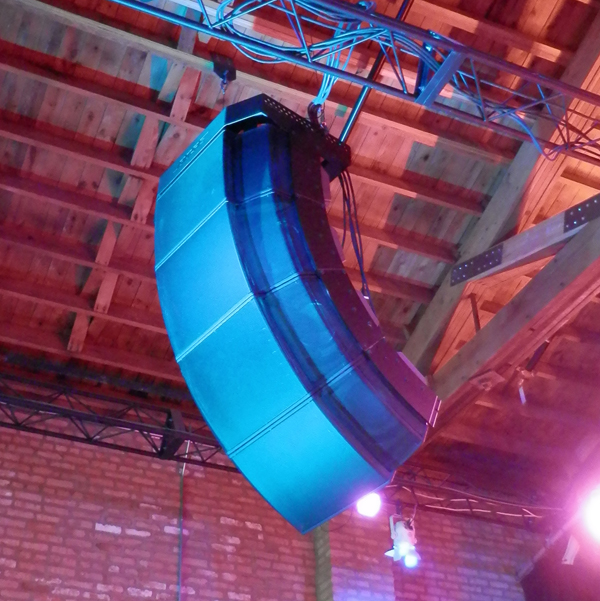
The poet Henry Wadsworth Longfellow famously said, “Music is the universal language of mankind.” It’s certainly a dialect shared by four lifelong Chicago-area musicians who have come together to create Wire, a venue for live music performance, education and production carved out of an old Teamsters hall in near-west suburban Berwyn, IL.
The four musicians include Chris Neville of Tributosaurus, which faithfully reproduces the recordings of classic rock groups (a different one each month); Paul Bolger of popular jam band Mr. Blotto; Tracy Dear of alt country group Waco Brothers, and Jon Smith, a noted recording engineer.
A collective statement from the partners presents their vision: “Wire was an idea that came about several years ago, an idea that intends to reclaim music’s heritage as a method of communicating – not something done in isolation, but something shared with other musicians, the surrounding community, and the world at large.”
Wire’s stage hosts a steady stream of live performances both diverse and eclectic: rock, blues, reggae, acoustic, jazz – and those that escape easy definitions. Space behind the stage has been carved out as the classrooms for Rock University, where students learn both music and production, and above that is the makings of a soon-to-be implemented recording studio.
The venue is an important part of a thriving transformation of the arts community along Roosevelt Road in Berwyn, just a 20-minute drive from downtown Chicago and already the home of venerable FitzGerald’s Nightclub, a staple of the music circuit celebrating its 35th year.
It’s not surprising given the collective decades of performance experience that the partners are well-informed on the subject of sound reinforcement. Bolger, for example, notes that Mr. Blotto has owned its own PA for two decades, made up of premium components. Equally unsurprising is that they turned to fellow musicians for design and installation of Wire’s house and monitor systems.
Neville’s initial call went to TC Furlong, head of the sound company based in Lake Forest, IL since 1973 that bears his name and also a long-time player on the region’s music circuit. Furlong in turn brought Brian O’Connell of his staff into the loop to serve as project manager, and he too is a veteran player on the Chicago scene, noting, “I’ve known Paul (Bolger) for a long time. Our bands have opened for each other over the years.”
Developing The Space
The building that houses Wire actually began life as the Oak (and later the Oakwyn) Theater in 1934, largely presenting motion pictures. Later it was acquired by the local chapter of the International Brotherhood of Teamsters, which transformed it from a theater into a two-story office building. It remained that way, even after the Teamsters vacated it, until being purchased by the Wire partners.
The interior was essentially “gutted,” revealing a beautiful, open space framed by exposed beige brick. After decades of inattention, the brick was restored to its original beauty, topped by a natural wood ceiling that adds to a warm, clean aesthetic.
A large stage (27 feet wide and 15 feet deep) dominates the front of the room, and looking out from there, one sees a large audience area capable of accommodating about 400, with a bar behind that topped by a VIP area comprised of a couple of the old offices that were left in place.
Right away, it was obvious that the room’s numerous hard, parallel surfaces (the floor is concrete) presented a primary demand of the house loudspeakers: pattern control. At the same time, the partners wanted a system with a highly musical signature.
During the evaluation process, O’Connell tipped off Bolger and Neville to a demonstration being presented by Bose Professional of its RoomMatch loudspeaker arrays at another local theatre. They liked what they heard, and a direction was set.
“RoomMatch has a beautiful musical signature,” Bolger says. “You can hear all of the subtleties, the true tonality of acoustic instruments, the ‘whisper’ of guitar strings. It’s beautiful, clean, and intelligible.”
O’Connell notes that a key aspect of the RoomMatch approach, with models available in numerous dispersion patterns, also met the absolute need for output that could be focused on the audience while keeping stray energy off of the room’s many reflective surfaces. Further, with the TC Furlong team new to RoomMatch, Bose Professional stepped up to provide design support, particularly in terms of modeling via the company’s Modeler software.



